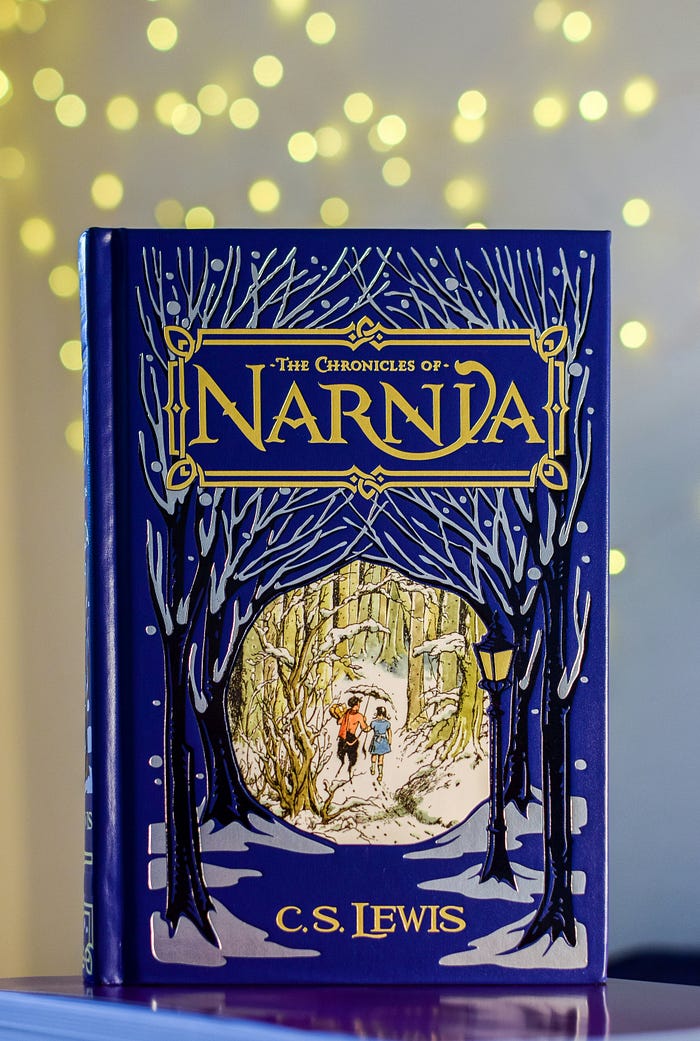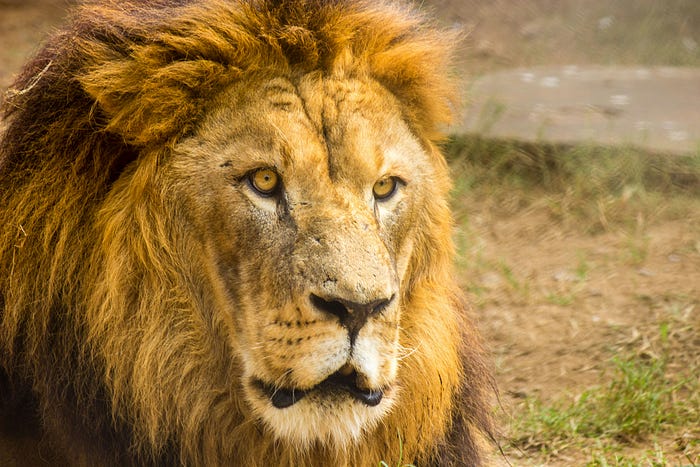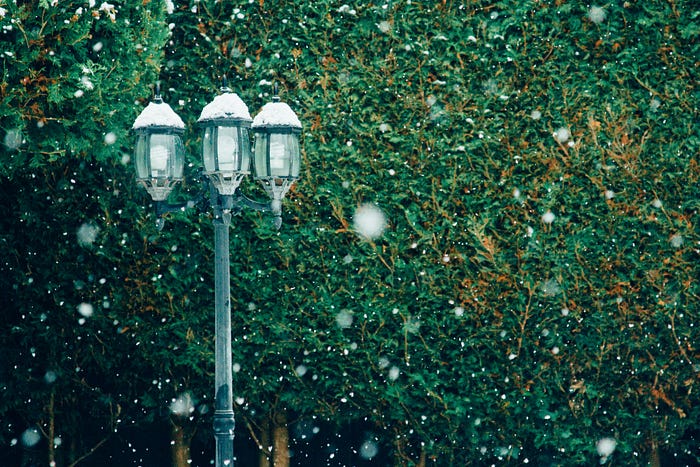Classic literature passes the test of time by continuing to speak good, powerful lessons on important issues that do not go away. In The Odyssey, we are captured by the overwhelming desire to get home. In Hamlet, we are torn by indecision. For Whom the Bell Tolls tells us of the plight of the rebel.
There may be elements of the story that no longer apply to today's world or that no longer fit in it. Odysseus had slaves, women couldn't act in Elizabethan England, and Hemingway was a misogynist. But these things can be cut away or treated as useful, largely innocuous pieces of historical information. They could even be details that draw more meaning from the text and inform us of why our society is the way it is.
In The Chronicles of Narnia, though, these flaws in the books' message are not harmless. If the Christian metaphor and the 1950s-style sexism and racism aren't enough to strip the title of "classic literature" from The Chronicles, then the virulent Islamophobia in this children's series should be. Worse, the anti-Muslim attitude cannot be cut from the series.
It is the series.
It is the lesson being taught.
Narnia is not just about getting Christian concepts like faith and providence in front of malleable children; it is also about sowing the seeds of distrust and disdain of Muslims and their Islamic faith.
That has no place in modern society.
Unless you're some ultra-right-wing Christian nationalist. Then they're perfect. Put these seven between your Bible and The Turner Diaries.
The Christian allegories of Narnia include lots of Muslim bashing
C.S. Lewis claimed that he did not set out to make The Chronicles of Narnia a Christian allegory, but that the religious element "pushed itself in of its own accord."
If you read them in the order in which they were written or published, you can tell.
The Lion, The Witch, and the Wardrobe begins with a secular, almost pagan feel to it — a faun holding an umbrella and loitering under a lamppost in the snow — though the Narnians lament how "it is always winter but never Christmas" and keep referring to "sons of Adam and daughters of Eve." This vibe, though, is just the bait for the switch that is already underway before Wardrobe's climax with Aslan's Christ-like self-sacrifice, resurrection, and triumph.
This increasingly loud Christian allegory continues in the second book, which would be Prince Caspian, but it is not until the third, The Voyage of the Dawn Treader, that we catch the first real whiff of Lewis' anti-Muslim side. There, we are first introduced to the Calormen, and it is pretty clear who they represent and what we should think of them. The scene: Prince Caspian has just discovered that The Lone Islands have been allowing slavery. Outraged, he abolishes the practice, effective immediately, and:
Two merchants of Calormen at once approached. The Calormen have dark faces and long beards. They wear flowing robes and orange-colored turbans, and they are a wise, wealthy, courteous, cruel, and ancient people. They bowed most politely to Caspian and paid him long compliments, all about the fountains of prosperity irrigating the gardens of prudence and virtue — and things like that — but of course what they wanted was the money they had paid (page 62)
Hhholy dog whistles, Batman!
After drawing these two bold lines between "Calormen" and "Muslims," as well as the implication that Narnians are Christians, Lewis wanders off for a bit.
When he does return to the concept again in The Horse and His Boy, though, he comes back hard and doubles down.
Unlike the other books in the series, The Horse and His Boy is set in Calormen. A boy, who we will later discover is a Narnian, and his Narnian talking horse flee the country for their true homeland, from which they were stolen.
Everything about life in Calormen is negative. There's child abuse. There's hunger and poverty. There's slavery. The desert is hot. There's the wanton abuse of power by anyone and everyone who has it on anyone and everyone who doesn't have it.
Through it all, the scene is aggressively Persian. The people wear turbans and light silk robes. They wield scimitars. They sit cross-legged and tell stories in a peculiarly Arabian fashion. They say "May he live forever" every time they mention their despot's name. When they meet their God, they put their hands in front of their faces and fall "flat, face downwards, on the ground." Their city is called "Tashbaan" and it has mosques and minarets.
And they attack Narnia.
Unprovoked.
And they would have won, were it not for God's, sorry, Aslan's help in getting the horse and his boy ahead of the Calormene army to warn of its coming.
There is no denying the connection. Calormen are Muslims, and Calormen are bad people. If A is B, and B is C, then A is C.

We get still more of this in the series finale, The Last Battle.
There, a talking ape finds a lion's skin and puts it on his talking donkey in order to make it seem like Aslan has returned. Calormen immediately joined in this ploy, using the confusion created by this false god to infiltrate Narnia, subjugate the Narnians, and overrun the country.
In an attempt to stop them, Narnians infiltrate the Calormen in disguise. When he takes the foreign armor off and puts his coat of Narnian chain mail back on, the Narnian prince says, "I feel like a true man again" (98).
Their defense doesn't work, though, and once the Calormen have taken over, there's nothing for Aslan to do but declare it Judgment Day and destroy the world.
But Lewis doesn't stop at the "Islamic takeover equals Armageddon" thing.
Lewis has some things to say about Allah.
The books make fun of Islam's God
Lewis has Aslan, who represents the Christian trinity. And he has Tash, who all the Calormen worship and who is therefore Allah.
Lewis makes it very clear that Tash is the devil and that Aslan is superior.
First, there's the appearance. When Tash first appears it has a "deathly smell" that makes people sick and looks like smoke:
…roughly in the shape of a man but it had the head of a bird [later revealed to be a vulture]; some bird of prey with a cruel, curved beak. It had four arms which it held high above its head, stretching them out Northward as if it wanted to snatch all Narnia in its grip; and its fingers — all twenty of them — were curved like its beak and had long, pointed, bird-like claws instead of nails. It floated on the grass instead of walking, and the grass seemed to wither beneath it. (92 and 150)
It is explicitly referred to as a demon (page 94).

Second, Tash takes human sacrifices (134 and 164). Not a good look, though it goes along with the Incan appearance.
And third, Tash takes orders from Aslan (150), strongly implying that Tash is a weaker deity.
Or we could just take Aslan at his word. Emeth, a Calormen who'd devoted his life to Tash, relates what happened when he came face-to-face with the lion in the afterlife:
Alas, Lord, I am no son of thine but a servant of Tash. [Aslan] answered, Child, all the service thou hast done to Tash, I account as service done to me… I [Emeth] overcame my fear and questioned the Glorious One and said, Lord, is it then true, as the Ape said, that thou and Tash are one? The Lion growled… and said, It is false. Not because he and I are one, but because we are opposites…For I and he are of such different kinds that no service which is vile can be done to me, and none which is not vile can be done to him. Therefore if any man swear by Tash and keep his oath for the oath's sake, it is by me that he has truly sworn, though he know it not, and it is I who reward him. And if any man do a cruelty in my name, then, though he says the name Aslan, it is Tash whom he serves and by Tash his deed is accepted (188–189)
Interestingly, Emeth appears to be the only Calormene to be spared damnation. I guess they're all bad people.
As for those believers of Tash/Allah, they're just confused and befuddled. Emeth tells Aslan:
Yet I have been seeking Tash all my days. Beloved, said the Glorious One, unless thy desire had been for me thou wouldst not have sought so long and truly (189)
As an atheist, Lewis' Christian allegory and his religious moralizing irk me. And as an atheist, I will never defend the abhorrent beliefs that percolate in the fundamentalist wing of Islam. But these unprovoked attacks on Islam and the people who believe in it have no place in a society that looks down on discrimination of any sort, and they certainly have no place in a series of novels intended for children.
"But it's a kid's book! They won't see these things!"
That makes it worse.
Kids won't see the impressions that these words are making on them, but they'll certainly feel them. When children read The Chronicles of Narnia, they won't notice that Lewis is spoon-feeding them Islamophobia. But they could certainly leave the series with its taste in their mouth.
The people wearing the turbans are the bad guys. Lewis could have chosen any group of traits to signal Bad Guy to his young readers. He chose turbans, Arabic-sounding names, scimitars, and Persian architecture and turns of phrase.
If The Chronicles of Narnia were published today, they would be published by Brave Books.
There is no place for that on today's bookshelves, let alone on the pantheon of classic children's literature.
Narnia has passed the test of time. Until now.
Let's not overlook Lewis' other shortcomings
The Islamophobia alone should doom The Chronicles of Narnia. But there's more.
There's racism. Calormen are the only ones described as having dark skin. To infiltrate their ranks, Narnians use blackface (The Last Battle, 64) and, when they take it off, Lewis spends a good half of a page describing how much better they feel (97). And the dwarves' choice insult for Calormen? "Darkie" (126).
There's the light, 1950s-style sexism. Susan's a crack shot with the bow and arrow, but she's not allowed to fight because she's a girl. Later on, she stops believing in Narnia because "she's interested in nothing nowadays except nylons and lipstick and invitations" (The Last Battle, 154). While Susan and Lucy, and later on Jill, are active in the story, they are always sidelined by the men when the going gets tough. Even Aravis, the Calormene princess fleeing to Narnia from a forced marriage with the horse and his boy and who is, undoubtedly, the most independent (non-evil) female character in the series, gets sidelined by Aslan in the home stretch, leaving the boy to deliver the message of the approaching army. Why did she get sidelined by Aslan? She did something wicked.
Oh, and the chief antagonist in three of the books is a witch. Curious how that worked out.
Oh, and then there are the strange passages in The Silver Chair where Lewis whines about what were then-current trends in education policy, like making schools coeducational (5). It's ruining education, he tells us, and who's running it? A woman (242)!
There's even slavery done wrong. Weird to have slavery in a kid's book nowadays, but when the protagonists get enslaved in The Voyage of the Dawn Treader, the way Lewis presents it makes it seem like the whole experience is basically a bit of a bother (42).
Conclusion
The Chronicles of Narnia have aged like milk. There are plenty of other options. Put some of those in front of children. Percy Jackson & the Olympians comes to mind, and the religious right hates it, so even better.


